Bitcoin price forecasts for 2023 have been very dramatic. Before the impending halving in April 2024, BTC’s price could potentially increase by over 500% to reach $180,000, according to investment research firm Fundstrat. Standard Chartered also predicted a significant increase to $50,000 this year and a potential breach of $120,000 by the end of 2024.
As the year progresses halfway through and Bitcoin maintains a 70% increase in value since January, it seems easy to believe so. Following some high-profile US bank failures this year, the price of Bitcoin, while it briefly fell, was able to recover and move into a bullish phase.
However, some analysts suggest that the long-awaited bull run may not take full effect until the year 2024. This is based on examining three signs: historical bull and bear market patterns between 2018 and 2020, investor behavior, and the relationship between Bitcoin and US stocks.
Crypto market analysis: Bull and bear patterns
The timing of the next bull market has been the subject of discussion following an analysis of Bitcoin’s pre-halving patterns. A chart posted by cryptocurrency analyst @stockmoneyL on Twitter suggests that the bull market is unlikely to begin in 2023 because Bitcoin may follow prior trends.
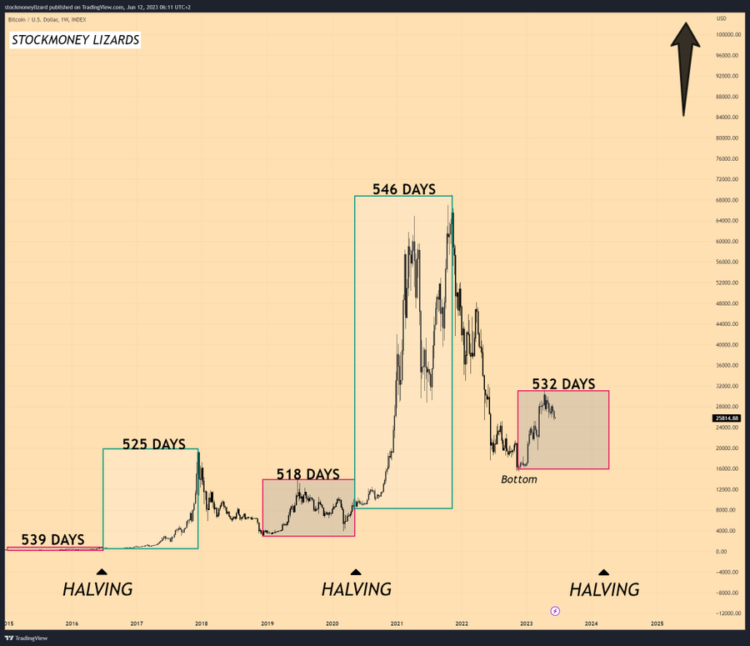
Instead, if past trends are accurate, the bull market may start in 2024. The chart shows a regular pattern of the number of days between the bear market bottom and the subsequent price halving event, indicating that bull markets typically begin after 530 days on average. This forecast puts the middle of 2024 in the spotlight rather than the anticipated start of a bull market in 2023, aligning with other bull markets that started after the halving event.
Taking a look at previous bull markets, Bitcoin consistently breaks its prior all-time highs. Bitcoin reached a remarkable peak of $19,000 during the 2017–2018 bull market, but that was just the beginning of what was to come. Bitcoin reached previously unheard-of heights during the 2021 bull market, rising as high as $69,000, more than tripling its previous all-time high.
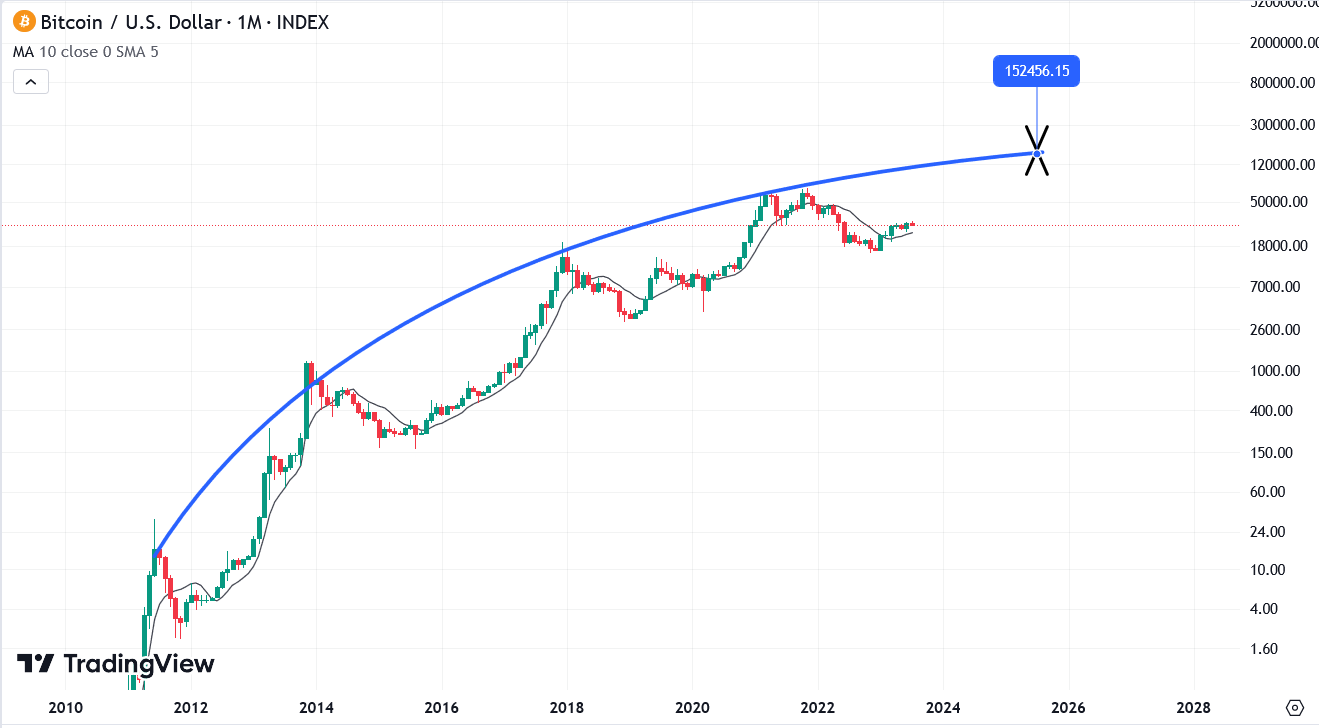
With simple optimistic interpolations, the price of BTC may rise to $150,000 during the upcoming bull market. Various forecasts have given varying dates for this surge, but it typically happens about a year after the market’s halving and the beginning of the bull market. In this scenario, 2025 would be predicted as the new all-time high for Bitcoin.
Bitcoin HODLers constantly “buying the dip”
Bitcoin investors continuously accumulate Bitcoin, and the number of long-term wallets is growing by the day. Despite multiple pieces of news that can possibly deter investors from buying high-risk assets, such as the US central bank’s decision to keep rising interest rates, Bitcoin investors’ holding power remains strong. For example, an astounding 3.4 million new Bitcoin addresses appeared despite a price drop that brought it below $30,000, indicating a persistent interest from investors and a constant inflow of new participants.
There is, however, another side to this tale. Bitcoin may be overvalued, according to the network value to transaction (NVT) ratio, a gauge of the asset’s valuation, which has risen to multi-year highs. It’s a riddle that keeps industry watchers on their toes.
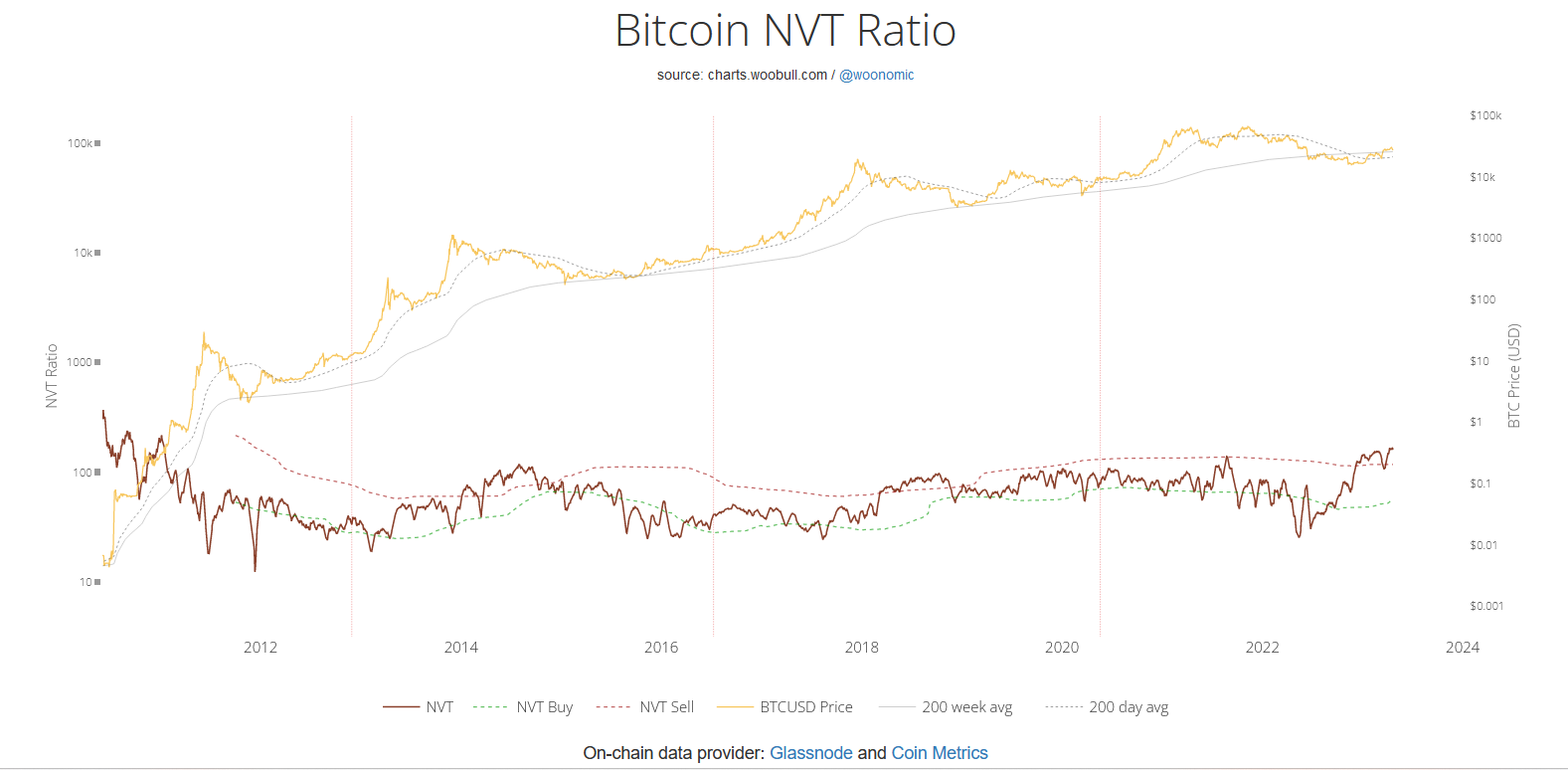
The fact that Bitcoin’s volatility has strangely dropped to historical lows adds even more mystery to the situation. Low volatility periods have historically frequently preceded large price swings, suggesting that a storm may be brewing beneath the apparent calm. Both experienced investors and newcomers trying to understand the complexities of the cryptocurrency world will find it fascinating as the price of Bitcoin continues its journey and the market remains captivated by the contrasting signals.
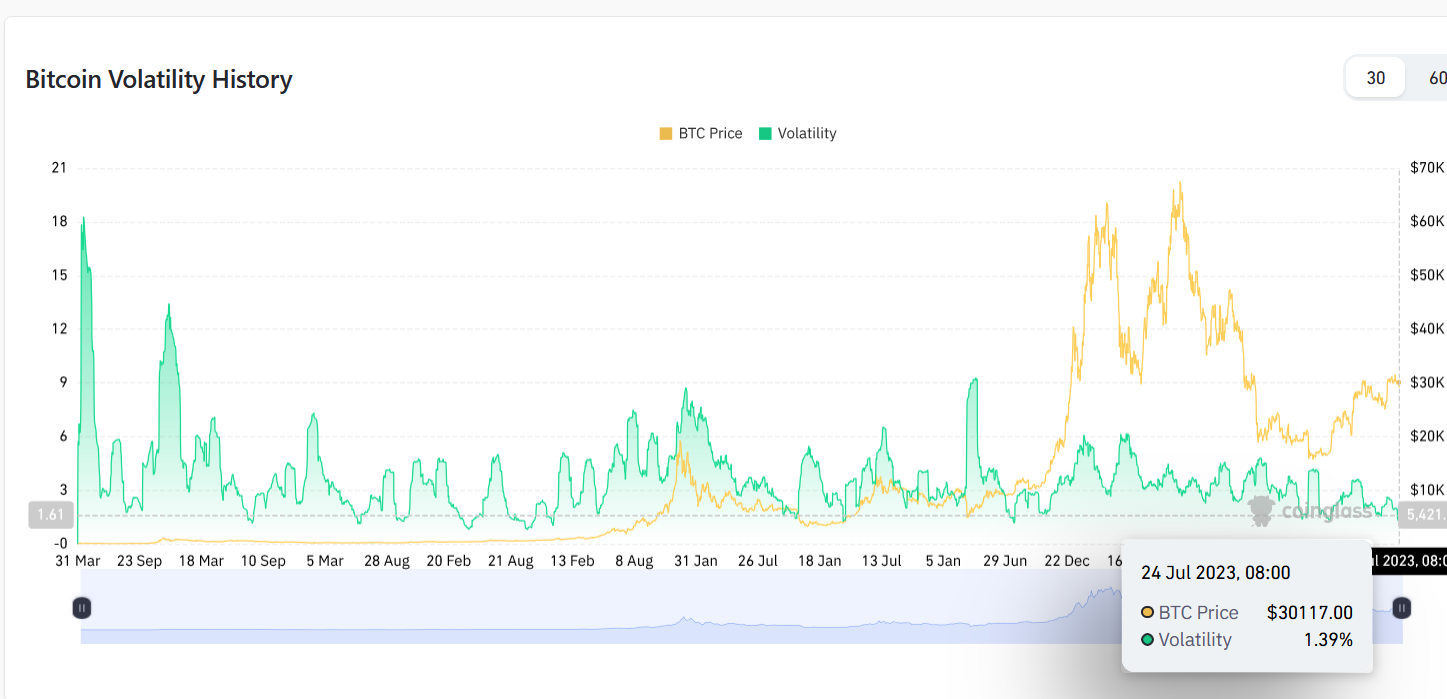
Decoupling Bitcoin from Traditional Markets
The relationship between Bitcoin and US equities is another crucial factor. This year, Bitcoin has outperformed industry titans like Apple, Tesla, and Amazon. The fact that this correlation has recently decreased to a two-year low of just 3% may imply that Bitcoin is increasingly seen as a unique asset class that can be used to hedge against traditional financial instruments. However, it’s important to keep in mind that Bitcoin ended the year 2022 with a high correlation to the S&P 500 Index and Nasdaq.
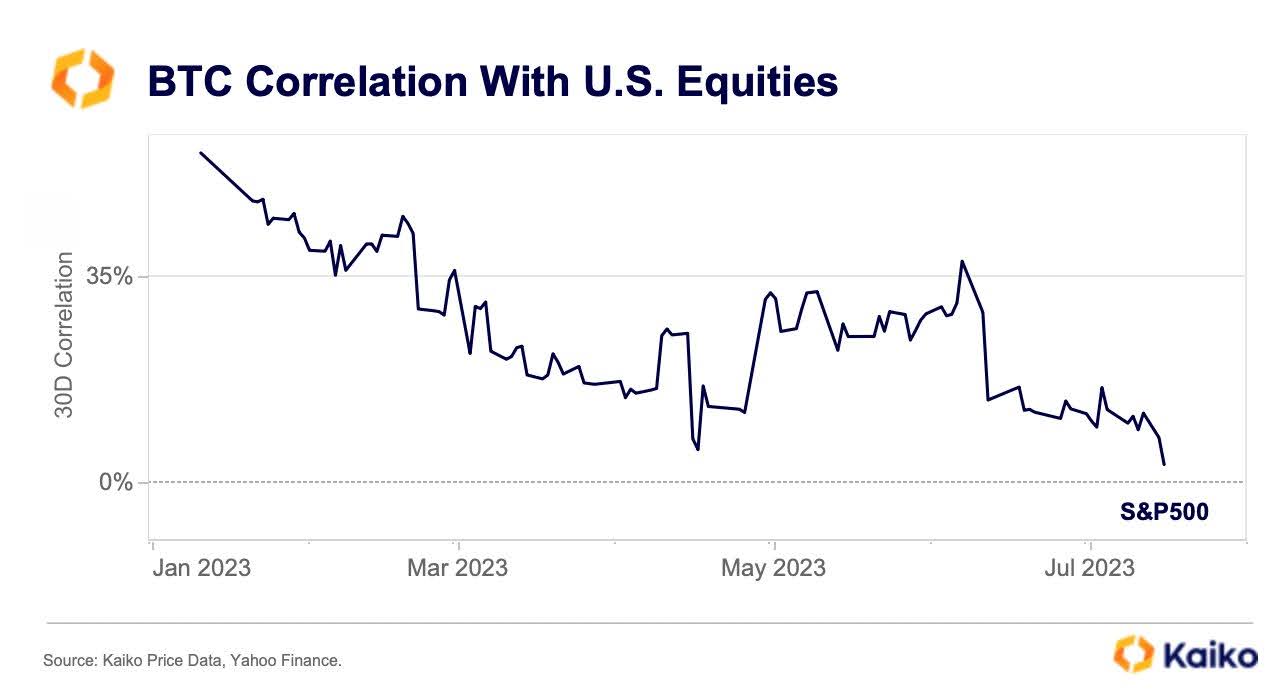
The decoupling of BTC from traditional finance and equities, according to Blockstream CEO Adam Back, may result in a price surge, which adds another level of complexity to the situation. Some BTC proponents have raised objections to the asset’s function as an inflation hedge in response to this correlation. Despite this, many still think that Bitcoin can act as a hedge against inflation and see the cryptocurrency’s growing independence from conventional finance as a positive sign for its future.
The takeaways
In conclusion, Bitcoin has demonstrated remarkable resilience in the face of recent US banking crises and continues to be a subject of intense speculation and analysis. While price predictions for 2023 vary widely, the potential for significant increases is evident. Analysts’ assessments on the timing of the next bull market diverge, with some suggesting it may not fully take effect until 2024 based on historical trends.
The cryptocurrency’s history of surpassing previous all-time highs and the prospect of reaching $150,000 during the upcoming bull market add to the intrigue. Despite concerns about overvaluation and low volatility, Bitcoin’s growing popularity and persistent interest from investors remain strong indicators of its appeal.
The decreasing correlation with traditional equities and the potential for Bitcoin to be used as a unique hedge further highlight its evolving role in the financial landscape. Many people believe that the cryptocurrency’s growing independence from conventional finance is a good sign for its future, even though some people question its ability to serve as an inflation hedge.
As Bitcoin continues its journey, the market remains captivated by its contrasting signals and enigmatic nature. With the cryptocurrency space constantly evolving, investors, both experienced and newcomers, will find it fascinating to navigate the complexities of this ever-evolving digital asset.




